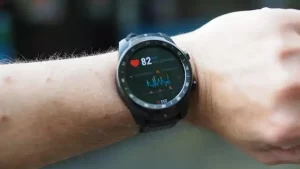Are there better treatments for high-mortality-rate Sepsis?
- Statins Lower Blood Lipids: How Long is a Course?
- Warning: Smartwatch Blood Sugar Measurement Deemed Dangerous
- Mifepristone: A Safe and Effective Abortion Option Amidst Controversy
- Asbestos Detected in Buildings Damaged in Ukraine: Analyzed by Japanese Company
- New Ocrevus Subcutaneous Injection Therapy Shows Promising Results in Multiple Sclerosis Treatmen
- Dutch Man Infected with COVID-19 for 613 Days Dies: Accumulating Over 50 Virus Mutations
Are there better treatments for high-mortality-rate Sepsis?
- Red Yeast Rice Scare Grips Japan: Over 114 Hospitalized and 5 Deaths
- Long COVID Brain Fog: Blood-Brain Barrier Damage and Persistent Inflammation
- FDA has mandated a top-level black box warning for all marketed CAR-T therapies
- Can people with high blood pressure eat peanuts?
- What is the difference between dopamine and dobutamine?
- How long can the patient live after heart stent surgery?
Are there better treatments for high-mortality-rate Sepsis?
Sepsis is a systemic inflammatory response syndrome caused by bacteria and other pathogenic microorganisms invading the body, and the incidence continues to rise.
There are more than 18 million new cases of severe sepsis worldwide every year.
However, the medical treatment of this disease is still very limited, and the mortality rate of sepsis can reach 30%-70%. Globally, one in five people may die from sepsis or its complications.
In addition to routine anti-infection and organ function support, the scientific community is working to find novel treatments to save the lives of more sepsis patients.
The main idea of some studies is to provide patients with immune cell reinforcements, because patients with sepsis are often accompanied by a large reduction in the number of white blood cells.
However, according to the available experimental data, the benefit of direct infusion of granular leukocytes is very limited, and these cells exist for a short time and cannot function for a long time.
A new study from eLife begins to consider the help of another type of cell, hematopoietic stem and progenitor cells (HSPCs).
Scientists at Baylor College of Medicine found that these cells have receptors for cytokines, chemokines, and pathogen-related molecules, which can respond quickly to signals from these molecules.
As the precursor cells of immune cells, HSPCs have a more durable self-renewal ability.
They can mobilize granulocytes when they receive a signal and are therefore a more persistent strategy than granulocytes.
Unless the HSPC itself has been inactivated by the influence of external conditions, such as chronic inflammation will impair the function and self-renewal of HSPC.
This led the researchers to consider whether the disordered inflammation in septic patients could combat the ability of HSPCs.
They first managed to infect mice with Streptococcus pyogenes, which developed sepsis.
They found that bacterial infection elicited a strong bone marrow response 24 hours after the infection, and the number of HSPCs in the bone marrow of these diseased mice plummeted.
This change may be caused by a surge in cellular workload. A large number of HSPCs are mobilized to produce immune cells and blood cells needed to fight infection.
Eventually, HSPCs are depleted and not enough to continue to prevent the development of the disease. Died within days.
To this end, researchers began to try to save the lives of mice by supplementing HSPCs externally.
They selected a batch of experimental mice and infused about 10,000 healthy HSPCs around 24 hours after they were infected with the bacteria.
Compared with mice that did not receive the infusion, these mice had a 50%-60% improvement in survival and had reduced levels of inflammatory factors in their bodies.

HSPC infusion can significantly improve the survival rate of mice with sepsis (Image source: Reference [2])
However, the infusion of HSPCs did not reduce the number of bacteria in the mice, it reduced the risk of death by producing immune cells to suppress undesirable inflammatory signals.
New research points to dysregulation of inflammation as one of the main drivers of death in patients with sepsis.
For example, some influenza viruses can combine with other bacterial infections to increase the level of inflammation in sepsis patients, further increasing the risk of death.
It is worth mentioning that the HSPC infusion method is also protective in the case of streptococcus and influenza virus co-infection, which shows that this method is also effective in the case of severe inflammation, and can reduce the occurrence of “cytokine storm” in general.
Possibly, this is the phenomenon of rapid and massive production of various cytokines in body fluids after the body is infected with microorganisms, which can cause organ failure and death.
References:
[1] Daniel E Morales-Mantilla et al, Hematopoietic stem and progenitor cells improve survival from sepsis by boosting immunomodulatory cells, eLife (2022). DOI: 10.7554/eLife.74561
[2] Stem cell infusion boosts sepsis survival in mice. Retrieved Feb 16th, 2022 from https://medicalxpress.com/news/2022-02-stem-cell-infusion-boosts-sepsis.html
Are there better treatments for infections with extremely high mortality rates?
(source:internet, reference only)
Disclaimer of medicaltrend.org
Important Note: The information provided is for informational purposes only and should not be considered as medical advice.



